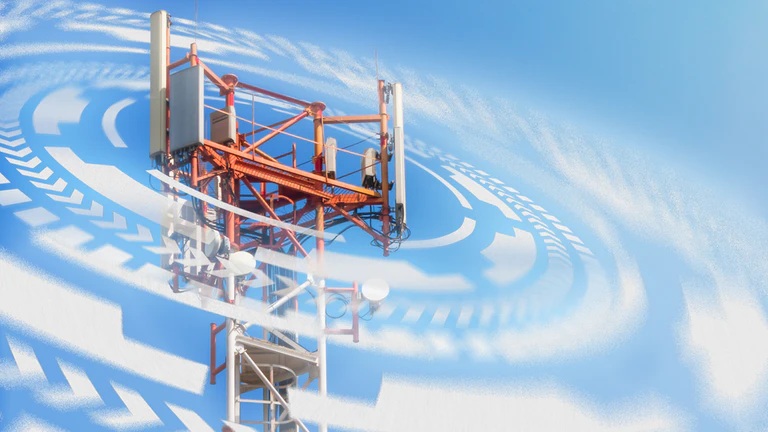Major mobile carriers in the U.S. will stop offering fleet telematics services on the old generation of mobile data services next year. 4G LTE offers faster speeds, more data, and video services as cellular carriers roll out ultra-fast 5G for consumers.
The sun is still setting on 3G cellular service for fleet telematics — but it’s taking longer than initially expected.
The four major cellular carriers in the U.S. had old goals to retire the third generation of cellular connectivity as 4G LTE has become standard for voice and data connections on mobile phones late last decade. The carriers also need to make room for high-speed 5G antennae across the country.
Those initial plans to sunset 3G — which effectively means carriers stop maintaining the antennae that connect the older technology — are still on the agenda. But it will be at least another year before 3G, which has been in use for about 20 years, is extinct. This gives fleets that are procrastinating the switch to 4G LTE telematics systems a little more time.
“Between now and when the 3G networks are eventually decommissioned, the principal benefit of moving to 4G LTE will be more reliable data connections, especially in areas of heavily congested wireless networks,” Bill Dussell, senior director of carrier relations for Trimble, told FleetOwner. “4G LTE does offer higher data throughput speeds once in session.”
The latest plans from the top U.S. carriers, show AT&T sunsetting 3G in February 2022 and Sprint shutting down in December 2022. T-Mobile, which merged with Sprint in 2020, has not announced a formal 3G sunset, the carrier has been more focused on 4G and 5G for years. Verizon, which only has 3G still up for its commercial and government fleet customers, now plans to shut down that network by the end of 2022.
This will open up more space for 5G, which for now is designed for consumers and other businesses. Dussell said it’s “impossible to predict” when trucking will take advantage of 5G mobile speeds. “Suffice it to say, however, current deployments of 5G have little relevance to trucking for the time being.”
While 3G mobile data could be transferred up to 384 kilobytes per second, 4G improved cellular data to up to 100 megabytes per second. Now, 5G promises data transfers up to 10 gigabytes per second.
With 5G still rolling out, there isn’t a direct trucking impact yet. But the improved latency of 5G could lead to the connected vehicles of the future, Sheila Nedelcu, senior director, automotive products HERE Technologies, told FleetOwner.
“5G would be able to broadcast to all the vehicles in the area that there is an accident ahead,” Nedelcu said as an example of a future where all vehicles — passenger and commercial — communicate with each other to create safer roads. “If a car’s traction control suddenly goes on because there is an oil spill, you could be communicating that information to all the cars in the area. I think it’s going to be beneficial for trucking and regular passenger cars to be able to have the vehicles talk to each other.”
But that connected vehicle future is still further down the road. For now, fleets can focus on the benefits of 4G, which Dussell anticipates will be around until at least 2030.
“Overall, 4G LTE is expected to provide increasing better quality of service, thanks to more reliable data sessions, and higher data speeds,” he said. “Higher speed and more reliable data connections improve performance of media-rich solutions, such as video.”
Trimble started including 4G connectivity on its telematics devices in 2017. The company spent much of the following years educating and encouraging fleet customers with older devices to make plans to upgrade to the newer, faster technology.
For fleets that are still using 3G technology, Lisa Park, assistant vice president of Internet of Things business development at AT&T, provided these tips to FleetOwner last summer:
- Determine what devices and how many devices on the 3G network need to be migrated.
- Ensure the device and solution are LTE-certified.
- Consider a provider with the ability to customize a complete fleet solution for 4G LTE, and one that can help ensure a smooth transition.
- Begin implementing a migration plan as soon as possible to meet the 3G network transition timeframe.
- Schedule vehicle downtime to replace and upgrade devices to minimize downtime.
Along with faster and more robust data transfers comes more powerful telematics for fleets using video systems inside and outside the cabs of its trucks. And since 2G, the precursor to 3G, was shut down across North America in 2017, the major carriers have racing to blanket the U.S. in 4G LTE service.
“Carriers such as AT&T and Verizon are claiming near-ubiquitous 4G LTE service within their existing and expanding network coverage areas,” Dussell said.
By Josh Fisher
CUT COTS OF THE FLEET WITH OUR AUDIT PROGRAM
The audit is a key tool to know the overall status and provide the analysis, the assessment, the advice, the suggestions and the actions to take in order to cut costs and increase the efficiency and efficacy of the fleet. We propose the following fleet management audit.




